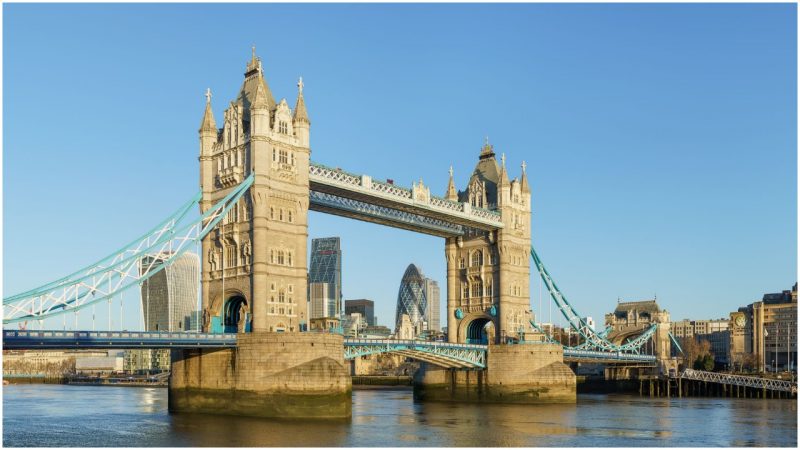April 5, 1968, was a day like any other for commuters in Central London; the sky was clear for a change, and spring was in full swing.
A red double-decker bus was crossing Tower Bridge, as were a few other vehicles and a man on a bicycle. The man on the bike felt a sudden tingling as if lightning were about to strike from out of the blue – then, it almost did.
With a thunderous roar, a silver fighter jet appeared out of nowhere and tore through the gap between the bridge and its upper walkways at over 400 mph. The cyclist got such a shock that he fell off his bike. Anyone else who saw it thought they had been dreaming.
It was no dream, though, and the man who had just piloted the fighter jet through the 200 by 110-foot gap was RAF Flight Lieutenant Alan Pollock.
Pollock’s extraordinary act that day was not sanctioned by the Royal Air Force, and, needless to say, when he finally touched down and exited his Hawker Hunter FGA.9 jet, he was promptly arrested.
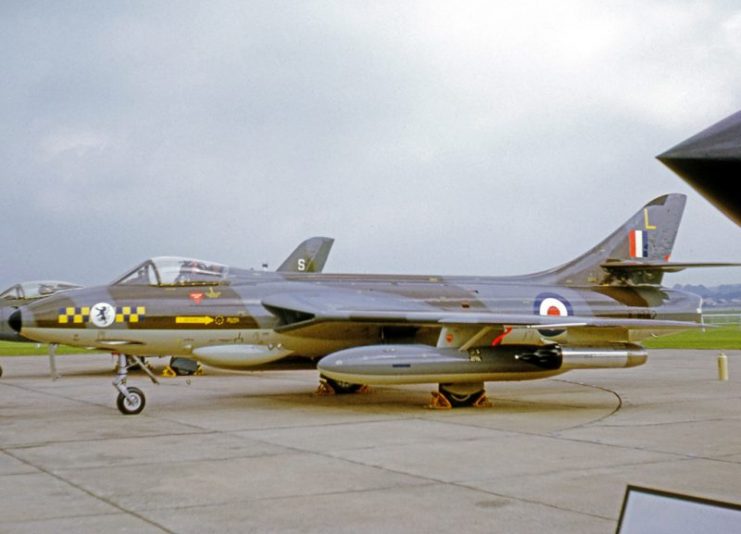
However, he was not court-martialled. In fact, he received tremendous support from the British public and RAF airmen, both those retired and those still in the service. He was instead discharged from the RAF on medical grounds.
What was it, though, that prompted Pollock to perform such an outrageous (if impressive) stunt on that warm spring day in 1968?
Well, for starters, 1968 was the 50th anniversary of the founding of the RAF, which made ’68 a momentous year for British aviation. While a ground parade had been organized, no flypast had been planned. This, coupled with budget cuts, made Pollock – and many other RAF airmen – upset.
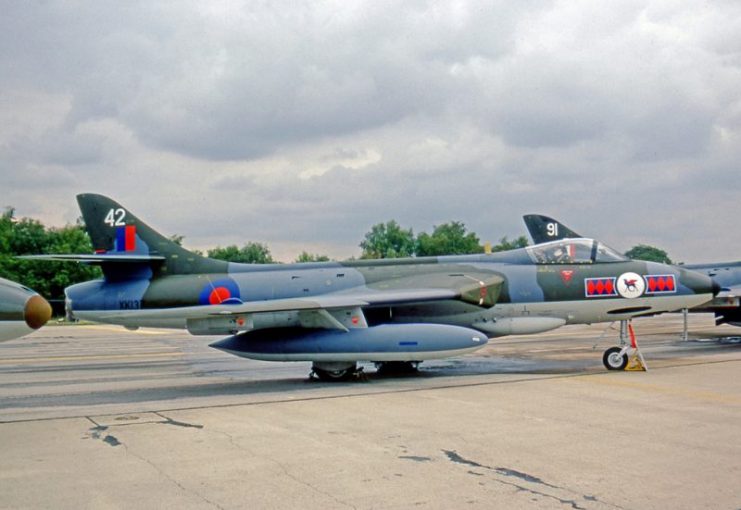
Pollock, who had joined the RAF in 1953, had risen through the ranks and kept a clean, well-respected track record. By 1968, he had attained the rank of Flight Lieutenant. He had cut his flying teeth in jet fighters like the de Havilland Vampire and had served in Germany and the Middle East, where he had acted as aide-de-camp to NATO Air Marshal Sir Humphrey Edwardes-Jones.
He wasn’t the type of man that anyone would expect to undertake such a maverick act, but when it seemed as if the RAF wasn’t being given the respect it deserved by Britain’s government at the time, Pollock decided a strong point needed to be made.
His initial plan of protest, however, had not included flying through Tower Bridge – one of the most famous bridges in the world. The plan had been a little more simple than that. All he had wanted to do, he said later, was to “fly over the Houses of Parliament, make some noise, get court-martialled and then just express what was not right.”
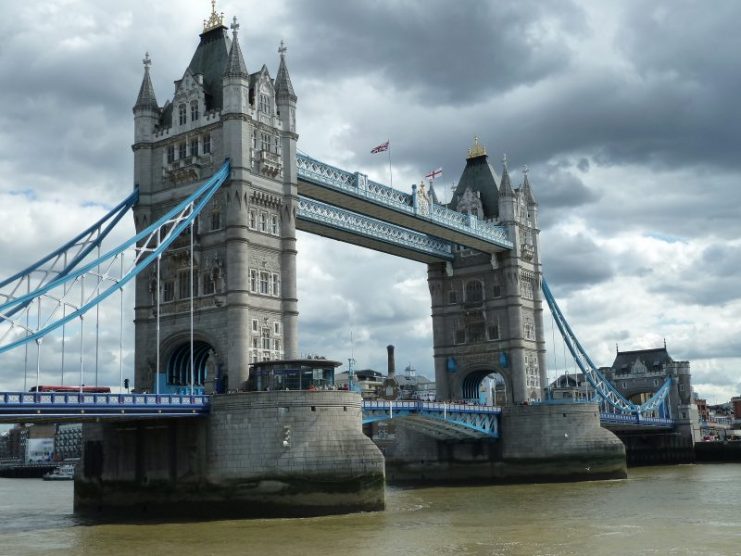
On the day of his planned one-man-flypast, he snuck an AA street map of London into his flight suit before getting strapped into his Hawker Hunter and then took off with three other pilots of his squadron, who were heading back to their base at West Raynham.
But Pollock had a special detour planned. He tapped out a message to the other three pilots via his transmitter, stating that he had lost them but would find his way back. Then he veered off toward central London.
Pollock had to keep his Hunter low to avoid commercial air traffic. Scrambling to plan out a route and calculate speeds and distances on the AA map he had smuggled inside his flight suit, he had dropped to around 150 feet in altitude when he got to the Thames.
This was how his one-man-flypast began, but neither he nor anyone else had any idea at this point that it would go down in history. After zipping over a few of the bridges over the Thames, Pollock decided to begin act two of his London flypast.
He headed over to Westminster and the Houses of Parliament to make his protest about the attitude toward the RAF known to the government.
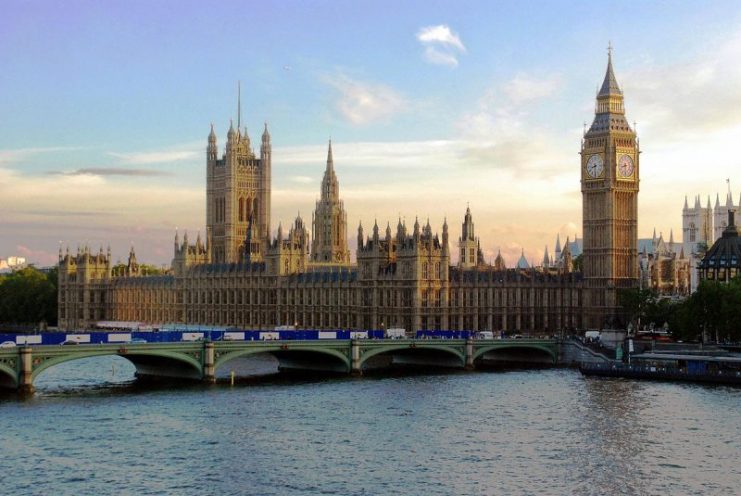
People in the Ministry of Defence building were shocked to hear the thunderous roar of a fighter jet passing by their building. When many rushed to the windows, those on the sixth floor were shocked to realize that they needed to look down, not up, to see the aircraft.
Pollock then passed the RAF memorial near Whitehall and gave his wings a waggle as a salute.
After this, Pollock flew around the Houses of Parliament three times, opening up the jet engine of the Hunter on the third pass to really give them a taste of noise.
After this, he headed back to the Thames, where he saw the iconic sight of London’s Tower bridge rapidly filling up his field of vision.
He had a few seconds to make the decision as he saw the 200-foot by 110-foot gap between the bridge and the upper walkway approaching, and then he made his choice. This wasn’t going to be another bridge that he flew over – this was going to be one that he flew through.
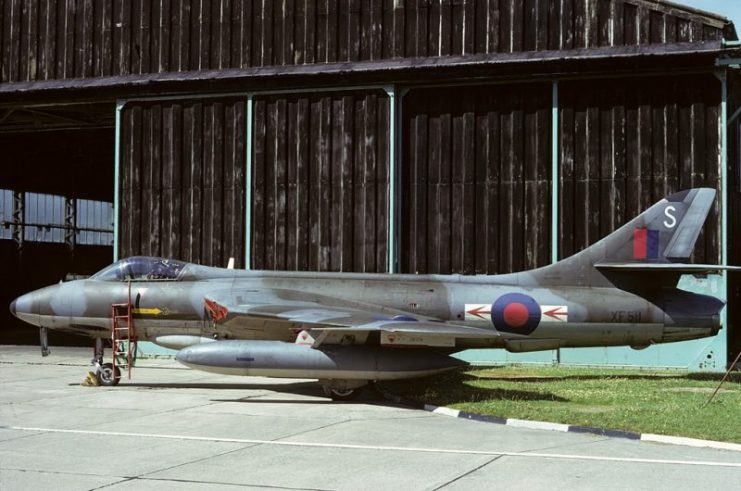
Traveling at over 400 mph, he ripped through the gap, almost crashing through with his tail fin missing the upper walkway by mere feet. Everyone on the bridge got the fright of their lives, but the jet fighter tore through the gap with such speed that most only registered what had happened long after Pollock had successfully made the gap.
When he arrived back at West Raynham, he was promptly arrested, as he had expected to be. He was scheduled to be court-martialled a few days after his arrest, but then something unexpected happened: there was an outpouring of support for what he had done, both from other members of the RAF and many members of the public.
The court-martial was called off, but that didn’t mean Pollock could keep his job. Seeing as a bad cold he’d been suffering from had now turned into pneumonia, he was discharged from the RAF on medical grounds, thus saving face for everyone in a sense.
After this, he went on to enjoy a successful career in business. In 1982, the government officially exonerated him fully from any wrongdoing.
Alan Pollock remains the only person who has ever flown a jet fighter through London’s Tower Bridge, and it is likely that this will be a feat that is never repeated.
